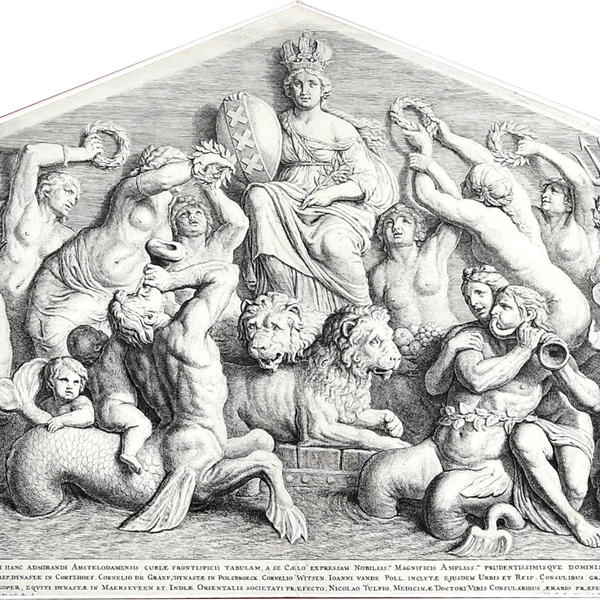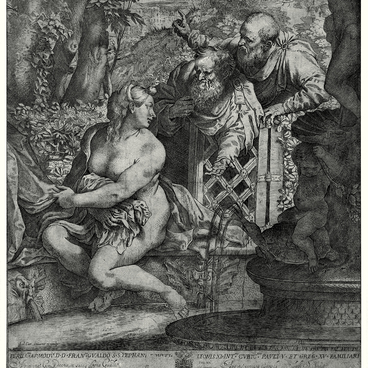The print Triumph of the Amstel River Goddess, Patroness of Amsterdam was made by the famous printmaker Hubert Quellinus in 1665. He replicated the image of the marble high relief that graced the triangular top of the facade of the Royal Palace in Amsterdam. The Dutch architect Jacob Van Campen had erected the palace as the Town Hall by 1655; however, the building was not completed until 1700.
High relief is a variety of sculptural relief, which rises above a solid background by more than 50%, with some sculpted elements projecting almost entirely from the field. The triangular pediment of the Town Hall, depicting the Goddess of the Amstel River, was the central piece of the architectural composition.
Artus Quellinus worked on the high relief for 14 years. It was executed in line with the traditions of Romanticism — a trend that emerged in the Netherlands under the influence of the Italian Renaissance. The sculptor created an intense composition: in a three-dimensional manner he conveyed the plasticity of the figures, preserved the monumentality and showed the characters in motion. The high relief depicts the triumph of the Amstel River Goddess, the patroness of Amsterdam. The goddess in a crown is positioned in the centre of the piece; in her left hand, she holds the municipal coat of arms, and in her right one — a branch of evergreen laurel, the symbol of the Dutch victory in a grueling war for political and religious separation from Spain. The war ended in 1648, when the Westphalia Peace Treaty was signed. The goddess is surrounded and glorified by river and sea deities: naiads, tritons and hippocampi — half-fish horses.
High relief is a variety of sculptural relief, which rises above a solid background by more than 50%, with some sculpted elements projecting almost entirely from the field. The triangular pediment of the Town Hall, depicting the Goddess of the Amstel River, was the central piece of the architectural composition.
Artus Quellinus worked on the high relief for 14 years. It was executed in line with the traditions of Romanticism — a trend that emerged in the Netherlands under the influence of the Italian Renaissance. The sculptor created an intense composition: in a three-dimensional manner he conveyed the plasticity of the figures, preserved the monumentality and showed the characters in motion. The high relief depicts the triumph of the Amstel River Goddess, the patroness of Amsterdam. The goddess in a crown is positioned in the centre of the piece; in her left hand, she holds the municipal coat of arms, and in her right one — a branch of evergreen laurel, the symbol of the Dutch victory in a grueling war for political and religious separation from Spain. The war ended in 1648, when the Westphalia Peace Treaty was signed. The goddess is surrounded and glorified by river and sea deities: naiads, tritons and hippocampi — half-fish horses.





